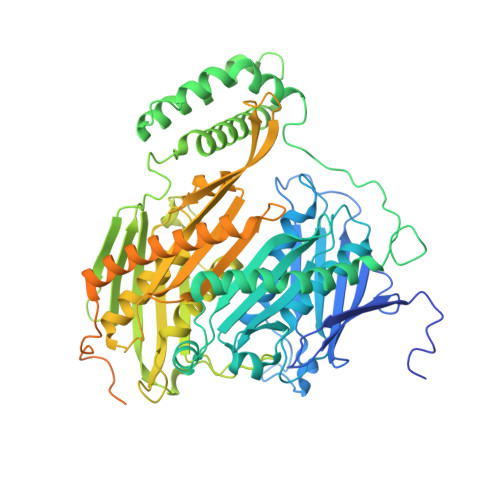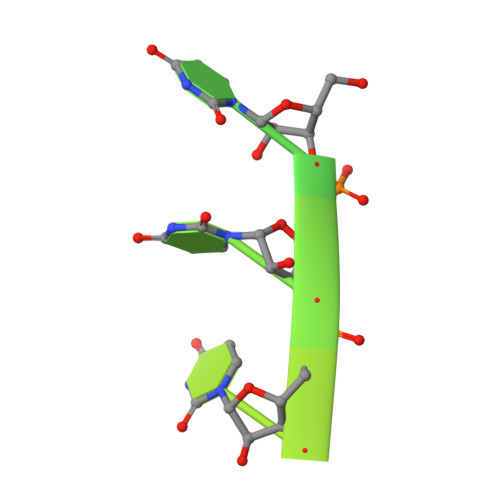Cryo-EM structures of Mycobacterium tuberculosis polynucleotide phosphorylase suggest a potential mechanism for its RNA substrate degradation.
Wang, N., Sheng, Y., Liu, Y., Guo, Y., He, J., Liu, J.(2024) Arch Biochem Biophys 754: 109917-109917
- PubMed: 38395123
- DOI: https://doi.org/10.1016/j.abb.2024.109917
- Primary Citation of Related Structures:
8WWP, 8WX0, 8WXF - PubMed Abstract:
As one of the oldest infectious diseases in the world, tuberculosis (TB) is the second most deadly infectious disease after COVID-19. Tuberculosis is caused by Mycobacterium tuberculosis (Mtb), which can attack various organs of the human body. Up to now, drug-resistant TB continues to be a public health threat. Pyrazinamide (PZA) is regarded as a sterilizing drug in the treatment of TB due to its distinct ability to target Mtb persisters. Previously we demonstrated that a D67N mutation in Mycobacterium tuberculosis polynucleotide phosphorylase (MtbPNPase, Rv2783c) confers resistance to PZA and Rv2783c is a potential target for PZA, but the mechanism leading to PZA resistance remains unclear. To gain further insight into the MtbPNPase, we determined the cryo-EM structures of apo Rv2783c, its mutant form and its complex with RNA. Our studies revealed the Rv2783c structure at atomic resolution and identified its enzymatic functional groups essential for its phosphorylase activities. We also investigated the molecular mechanisms underlying the resistance to PZA conferred by the mutation. Our research findings provide structural and functional insights enabling the development of new anti-tuberculosis drugs.
Organizational Affiliation:
School of Life Sciences, University of Science and Technology of China, Hefei, 230026, China; State Key Laboratory of Respiratory Disease, Guangzhou Institutes of Biomedicine and Health, Chinese Academy of Sciences, Guangzhou, 510530, China; Guangdong Provincial Key Laboratory of Biocomputing, Guangzhou Institutes of Biomedicine and Health, Chinese Academy of Sciences, Guangzhou, 510530, China. Electronic address: wang_na@gibh.ac.cn.
















